Today’s article was written by Digital Giants’ Client Success Manager Marissa Vanular.
I was fortunate to attend DigitalMarketer’s 10th annual Traffic & Conversions Summit (T&C) in San Diego in February. It was my first time attending, but I hope to return again since I came away with so many new ideas and enthusiasm for 2019, Digital Giants and our clients!
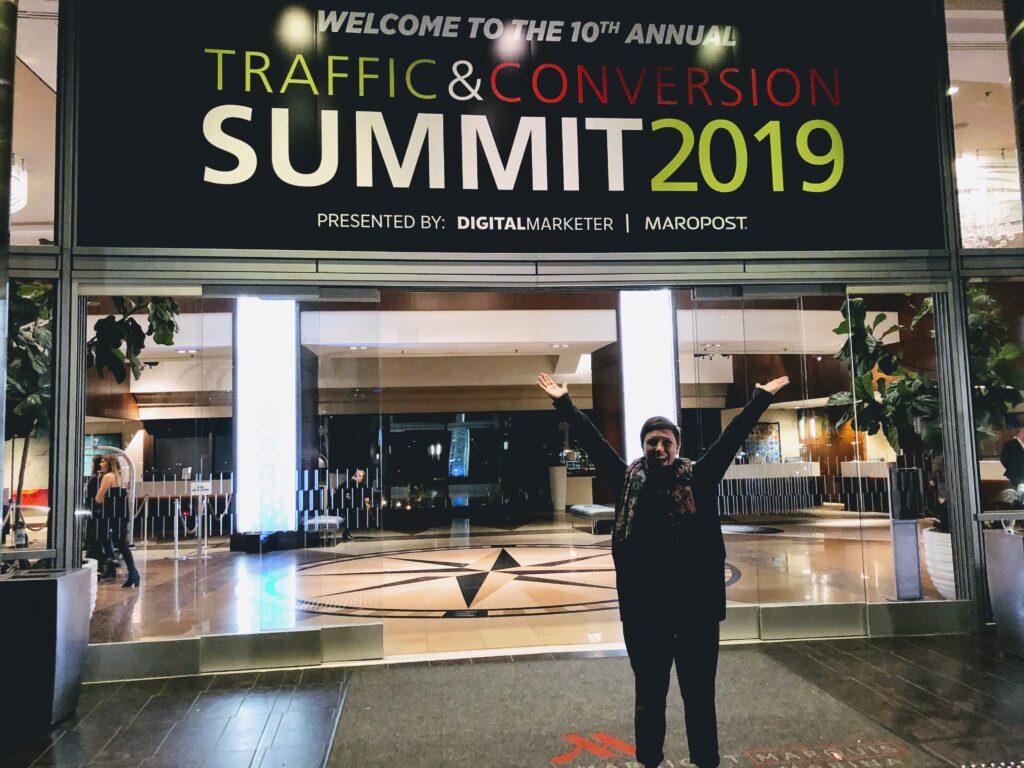
In a snapshot Traffic & Conversions Summit is:
- 3 days
- 108 sessions
- 80 speakers
- 6,000+ marketers
While I’m only one person and therefore couldn’t attend EVERY session, I was able to attend a total of 23 sessions and listen to 29 great speakers.
From those sessions, I’ve pulled out 21 things I learned that I thought were the most interesting and exciting. In today’s post, I’m running through the first eight. Stay tuned for Part 2, for the final 13 spanning paid advertising, content, website and analytics.
Digital Marketing
Will 2019 be the end of marketing as we know it?
Ryan Deiss, co-founder of Digital Marketer titled his opening keynote of the event: 2019 – The end of marketing as we know it. He started by talking about the 5 phases of technology (Discovery, Proliferation, Standardization, Consolidation and Innovation or Disruption). And how, in 2019, we were now in the Innovation or Disruption phase, where we could either innovate or die.
How we got here:
- Discovery: Digital Marketing started with the birth of the first banner ad in 1994
- Proliferation: Dot com bubble in the early 2000’s
- Standardization: Facebook/Google advertising rules in 2009/2010
- Consolidation: Facebook and Google attribute to mostly all online ad spending (2019)
I can’t think of a brand that wants to die. But I do know it’s easy to fall into a comfort zone, especially if things seem to be working or have worked in the past. The key is to get ahead and that takes innovation.
How?
Ryan suggests we try to do the opposite of what used to work.
Of the three strategies he laid out, I’ll review what I feel is the most important one: Going from Fast to Slow, using these three steps:
- Funnel to Journey
- Automation to Conversation
- Scalable to Unscalable and Untrackable
1. Turn Funnels into Journeys
The funnel as we know it is incomplete. It only captures the beginning of a customer’s relationship to a brand, not the entire relationship. Ryan suggests we shift responsibility away from leads, sales, and conversions to successful customers. Ie. we don’t just want customers to buy our product once (convert) we want them to become successful because of our product and tell others about it without us asking them to.
Here was his updated version of the customer journey. Note the much larger path post conversion:
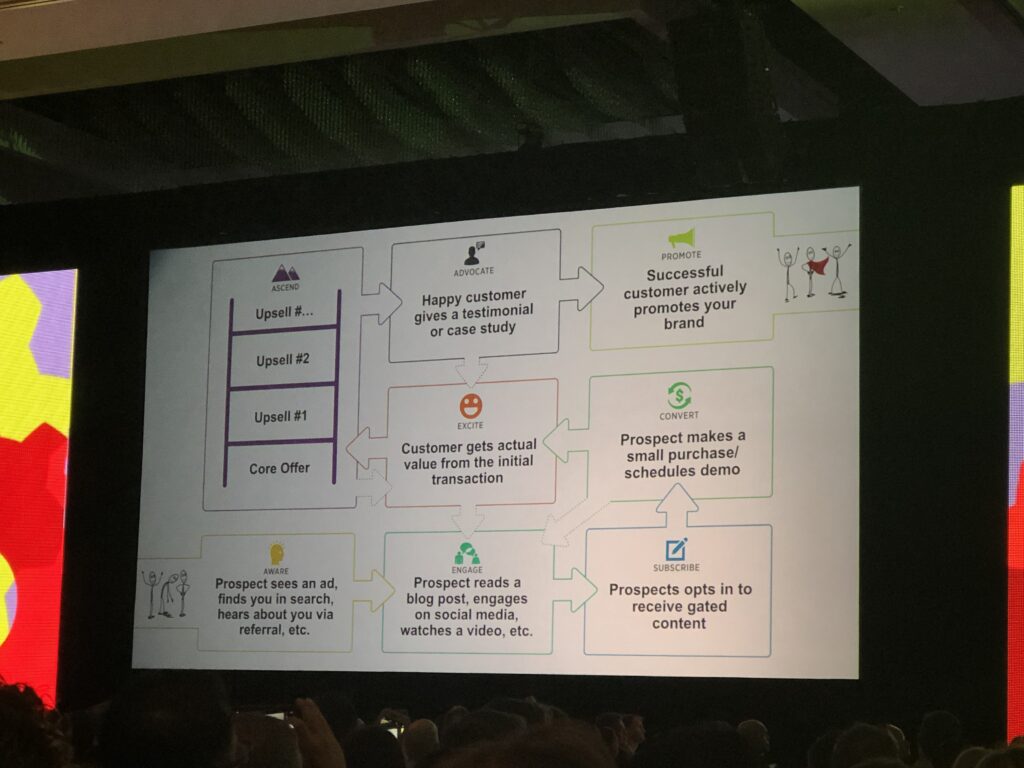
2. Automation to Conversation
We all love how automation helps us, day in and day out, but as I mentioned above, Ryan challenged us to do the opposite. So in order to disrupt, we need to TALK to our customers. Invest in real-time, one-to-one interactions.
Chat with customers on Facebook or Twitter, pick up the phone and call them, send them direct emails without any links to the website.
3. Scalable to Unscalable/Untrackable
By far one of the crazier things I heard at the conference was when Ryan suggested we start using tactics that aren’t trackable.
Sometimes do things just because it’s the right thing to do…even if you’re not sure if it will scale…Ryan Deiss
Example: Sending out an email without any links, with questions included with the purpose of starting a conversation with your customers.
Other ideas that you cannot track: Facebook groups, podcasts, books.
Check out the full opening keynote video by Ryan Deiss.
Conversational Marketing
4. Check out conversational marketing
The big #buzzword of T&C was conversational marketing. Conversational marketing is defined as “a one-to-one approach to marketing that companies use to shorten their sales cycle, learn about their customers, and create a more human buying experience”. (from Drift.com) Right now marketing is typically a one-way conversation when it should be two way.
5. Get a chatbot
As much as we’re saying to move away from automation to more conversation, chatbots can still effectively be used to START the conversation. Right now over 90% of companies don’t respond to customer inquiries within 5 minutes. In Dave Gerhardt‘s session on “15 ways to start using conversational marketing”, he talked about the flexibility chatbots have to help your customers navigate your site.
A chatbot can be used as a:
- A pricing concierge
- A chatbot can be used on a pricing page to help your customer understand the pricing model for your business.
- A tour guide
- Not everyone knows what they want when they get to your website, help them find what they are looking for.
- You can have the bot tailor the content based on the customer journey you want the user to take.
- Grow your email list
- If a user is engaging with your content, such as a blog, a chatbot can help them find more content that is similar to what they are engaging with and can suggest they join your email list to get more great content.
Take a look at your Google Analytics to see where bots could help you.
6. Change your email’s preview text
In Laura Belgray‘s session “Inbox hero” she said one of the easiest things you can do to further entice your users to click on an email, is to change the preview text.
With almost 50% of emails being read on mobile devices today, most email platforms show the email subject line as well as a line of preview text. If you do not add preview text using your email automation platform, the preview text will just show the first words in the email, which, most times, is the “view this email in a browser” text. Many people don’t know that you can easily change the preview text to further entice them to read it.
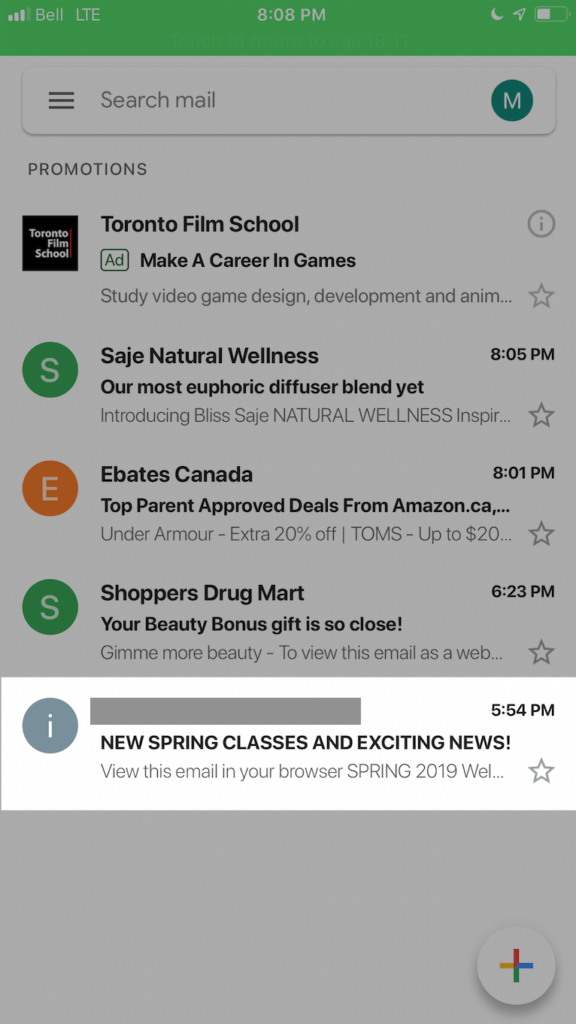
You can learn how to change the preview text on Constant Contact here, and for MailChimp here.
7. Learn to write great headlines
I would say that one of my favourite sessions was Jon Youshaei‘s “How to tell stories that sell”. In this blog, I’ll touch on a few things that I learned in his session, starting with how to write a great headline.
Start with EAT:
E: End result reader wants
A: Address any objections
T: Time period they’ll get it in
Example: I want to write a great headline, I’m not a copywriter, In 5 minutes
Results:
“Not a copywriter? No problem. Here’s how to write a great headline in 5 minutes.” (A + E + T)
“How to write a great headline in 5 minutes – No copywriter required” (A + T + E)
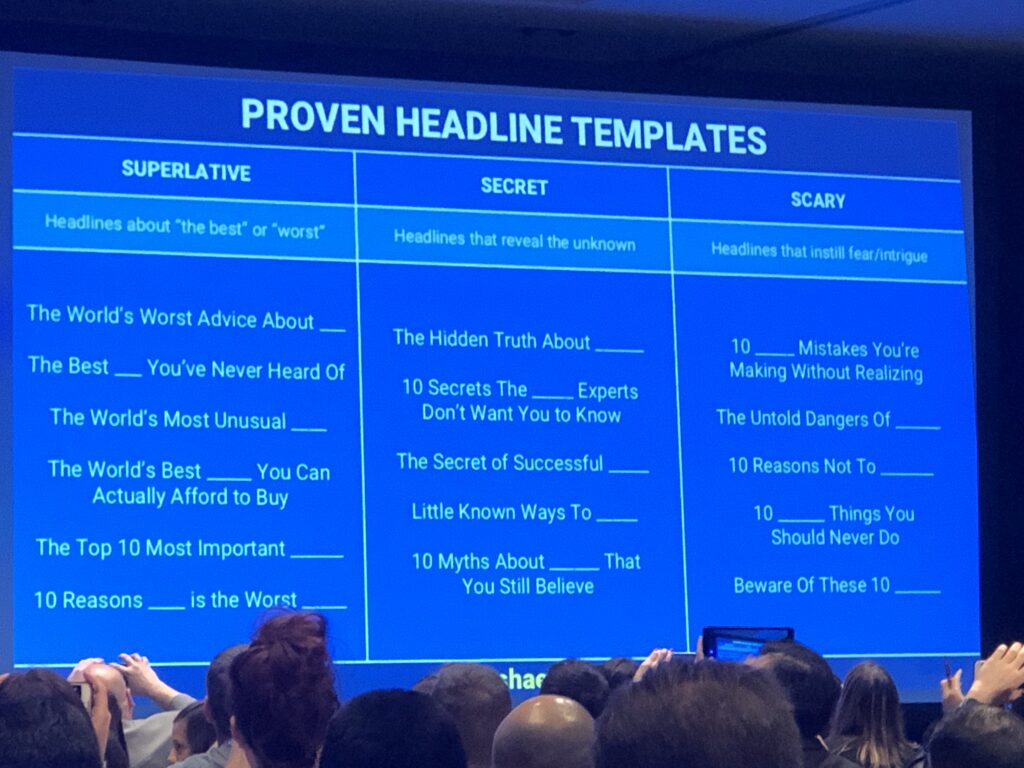
SEO
8. Use the Skyscraper Technique 2.0
Roland Fraiser‘s session: “17 unique marketing tweaks you can copy” gave us this new equation to think about: User Intent + SEO = Higher Rankings, termed Skyscraper Technique 2.0, from BacklinkIO.
User intent is defined as the main goal for a user’s Google Search, and Google more than anything wants to make the user happy. So Google’s algorithms show us the results they think we will like most. By using the Skyscraper Technique 2.0 to create content to better address users intent, your content has a chance rank higher.
The 3 steps of the Skyscraper Technique 2.0 are:
- Figure out user intent
- Satisfy user intent
- Optimize for UX (user experience) signals
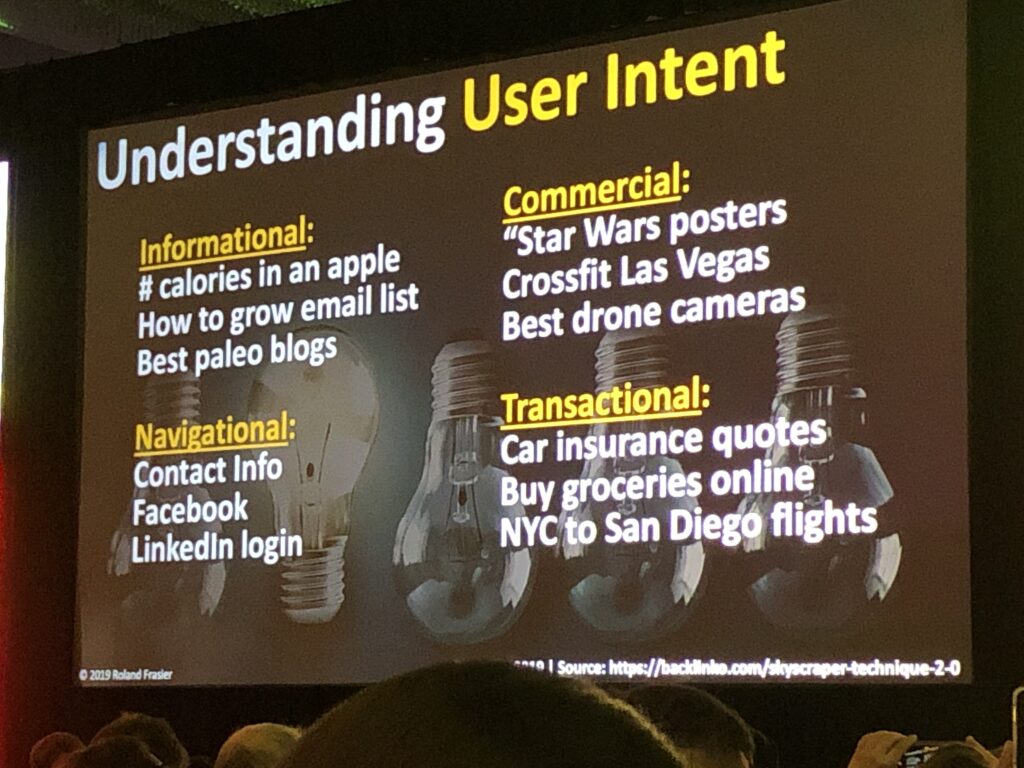
More To Come
PHEW! So that was the first 8 things I learned at T&C 2019. Check out Part 2 in the series where I share the final 13 things I learned!
If you want to connect and discuss anything related to digital marketing, leave a comment or connect with me directly.



![Why You Should Update Your Website Now [+ Quiz: Does My Website Suck?]](https://bedigitalgiants.com/wp-content/uploads/2020/03/Why-You-Should-Update-Your-Website-Now-Digital-Giants-Blog-Header-400x250.png)